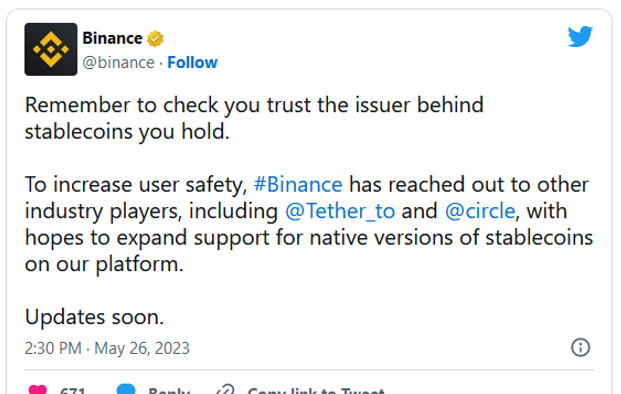Binance And Other Crypto Players Avoid Multichain As Rumors Arrive
Major players in the crypto ecosystem are stepping up their defenses amid growing concerns about the state of multichain, the main venue for transferring assets between different blockchains. Four days after apparent technical issues prevented some users from withdrawing tokens from the protocol, wild rumors about Multichain's security and the fate of its team are filling the void left by the platform's silence. A single tweet attributing some chain breaks to "force majeure" has only fueled widespread speculation that something was wrong.
The evidence-based world is now driving more and more actors to mitigate risk, regardless of the current state of omnichannel. Their answers illustrate how crypto bridges are creating the potential for a world of pain far beyond the brightest and most popular bridge risks (North Korea hack). The situation is complicated by the proliferation of multichain under bridges. According to Messari and DeFiLlama, it is the third-largest bridging protocol in terms of transfer volume and total block.
Like most bridges, Multichain uses a mint and lock mechanism to move resources between the 92 blockchains it works with. For example, when a USDC stablecoin holder aggregates assets from Ethereum to Fantom via multichain, the token is wrapped into a smart contract on Ethereum and then issued on Fantom — in this case, as a “wrapped” token called anyUSDC. According to DeFiLlam, all USDC multichain tokens and other similar USDC tokens dominate 50% of the Fantom stablecoin market. This is despite the fact that all USDC on Fantom are "bridge" assets and not "native" assets that Circle delivers directly to the chain. Therefore, all USDC tokens on Fantom rely on bridges to hold their value. This configuration works as long as the bridge works. At the height of the multichain issues this week, this did not happen and USDC tokens wrappedin Fantom lost their exchange rate. Some arbitrage traders told CoinDesk that they bought wrapped USDC tokens at a 30% discount during the multichain line that makes up 80% of Fantom's stablecoins. On Friday, Binance, the world's largest cryptocurrency exchange, called attention to the risks of non-native assets with a tweet, urging traders to "remember to verify that you trust the issuer behind the stablecoins you own.

The Fantom ecosystem's heavy reliance on Multichain hasn't inflicted a mass exodus on market participants so far. According to Parsec, a terminal builder, totals, such as total locked value, remain fairly stable despite some outflows to other chains. “The multi-chain bridge is fully functional and secure with the Fantom. "Anything that happens internally with the multi-chain has no impact on Fantom's overall assets," Fantom Foundation CEO Michael Kong told CoinDesk.